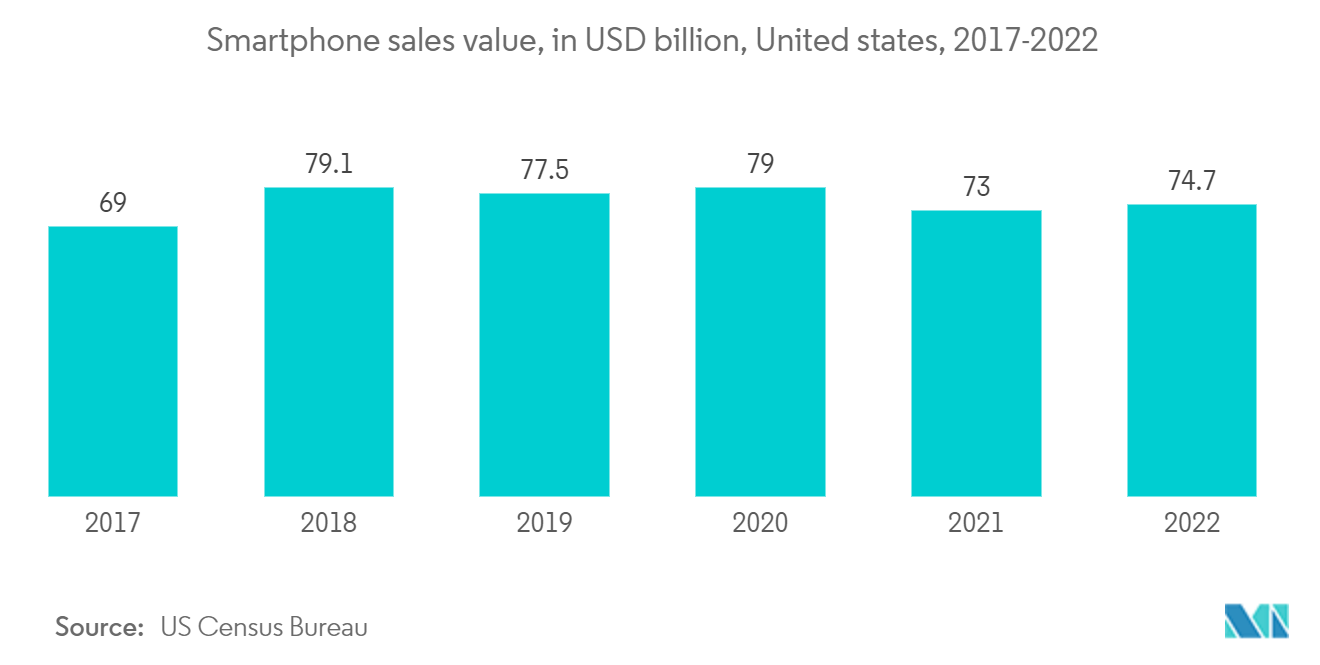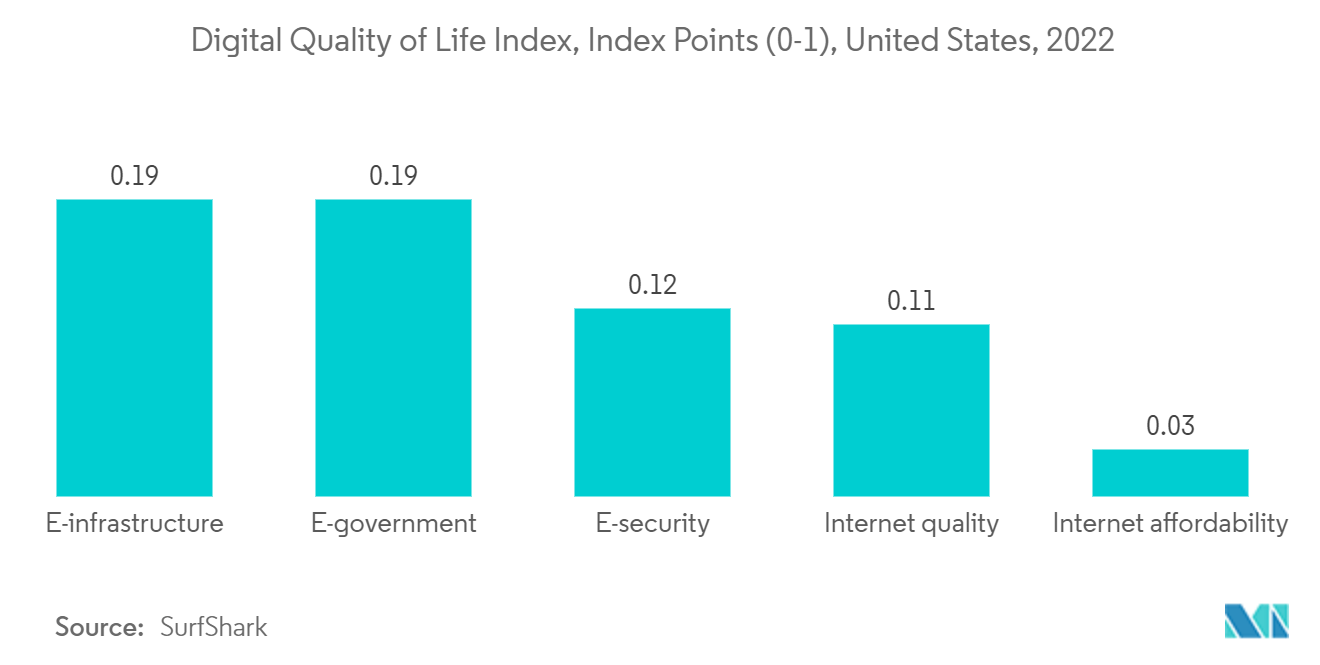Market Trends of Austin Data Center Industry
Tier 4 is Expected to Hold Significant Share of the Market
- A Tier-IV data center represents the other end of the range. This tier promises its customers uptime, 2N (two times the quantity needed for operation) cooling, and redundant infrastructure and electricity. These rules could safeguard most companies. Level IV customers hardly ever learn about problems with the data center infrastructures because of these redundancies. These tests serve as a testament to the dependability of top-tier systems. Several independent and physically separate systems act as redundant capacity components and distribution routes in this data center. Separation is necessary to avoid harm from being done to both procedures by a single event. Unexpected or planned disturbances may not have an impact on the ecosystem. The environment may be more susceptible to disruption if a failure happens if redundant components or distribution pathways are closed for repair.
- Tier-IV data centers are called "fault-tolerant." Unplanned maintenance does not affect data flow to a Tier-IV data center. Day-to-day operations continue regardless of whether or not assistance is provided. Mega companies frequently select Tier-IV data centers, outperforming all three tiers outlined above. The uptime rates can reach 99.995%, implying that the data center may only have 0.5 hours of downtime annually. A Tier-IV data center also has 96-hour power outage protection and multiple redundancies to ensure the system can continue operating even if significant components fail.
- Tier-IV facilities increase the failure tolerance of the Tier-III topology. IT operations will be unaffected if equipment fails or the distribution path is disrupted. All IT equipment must have a fault-tolerant power design to be interoperable. Continuous cooling is also required in Tier-IV data centers to maintain a stable environment. While the redundancy required to operate and maintain a Tier-IV data center is frequently prohibitively expensive, companies with the resources to reap the benefits of improved performance and dependability do so without hesitation. Government agencies often operate their data centers by Tier-IV data center standards.
- One of the primary drivers driving demand for data center systems and technology, propelling the market growth, is the rising cloud technology in data centers. Cloud technology is more adaptable because it can be accessed from various devices, and data may be recovered quickly. On the other hand, cloud computing provides fast speed, which aids the growth of other firms.
- According to US Census Bureau, a rise in the sales value of smartphones sold in the United States of USD 1.7 billion in 2022, for a total of USD 74.7 billion in sales in 2022. data center use for smartphones. Data centers are a critical part of the infrastructure that enables smartphones and other mobile devices. Data centers provide the storage, processing, and networking capabilities that enable the transmission and processing of the vast amounts of data that are generated by mobile devices. Such a huge rise in the sales of smartphones would drive the market.

Retail Colocation Center is Expected to Hold Significant Share
- Retail colocation is where the customer takes the space for lease within the data center, such as rack space within the caged-off area. Owing to various advantages, such as economics and ease of maintenance, smaller enterprises generally prefer retail colocation. Owning a data center is not a viable option due to the cost of land leasing. Also, maintenance of a colocation center is often not within budget constraints.
- The retail colocation market is likely driven by the high demand for colocation services from developing countries. Compared to wholesale colocation services, retail colocation services are highly suitable for enterprises requiring lesser computing power at one site or across multiple locations to benefit local and global customers. The retail colocation market is anticipated to grow significantly during the forecast period. About 100 kW of energy is typically needed to power retail data centers, while wholesale customers usually need more than 100 kW, owing to their business scale. Many facilities, such as security provision, customer support, cooling facilities, etc., are provided by colocation suppliers.
- Typically, retail customers have many partners to maintain connectivity. Therefore, a diverse set of carriers with good speeds are necessary. Additionally, as retail data center providers work with more clients than wholesale providers, their facilities usually offer a multitude of networks and services. Retail providers offer various services, such as smart hands and remote hands, for technical assistance, managed services, and network monitoring. Therefore, resolving issues can be as simple as raising a service ticket. Such services help exploit various other benefits, such as locating data centers away from disaster-prone areas that can be remotely operated. Due to this remote hand's technology, tax benefits in different states can be used to avail certain tax benefits.
- Many new technologies, including 100% green data centers, have been deployed in retail colocation. Sabey Data Centres, a provider of colocation data centers, today announced the start of construction of a new 40-acre data center campus in Round Rock, Texas. The new campus will have a power capacity of up to 72 megawatts (MW). The need for interconnectivity is also increasing, increasing the demand for retail colocation. It has been identified that the leading providers of colocation services offer as many as 230,000 interconnection possibilities. Many SME industries constitute a large part of the economy. Such SMEs cannot afford an entire space only for utility, as the IT staff and operations are included in this scale of operation.
- According to SurfShark, in 2022, the United States E-infrastructure index amounted to 0.1944. By contrast, the Internet affordability index was only 0.0326. Since retail colocation facilities have become old and outdated, their customers are choosing to leave these facilities to find other, newer, multi-tenant data center providers. When retail colocation facilities lose customers, this presents itself in their customer churn metrics. Indeed, public data center companies report churn metrics quarterly, with higher churn implying that more customers are leaving.

